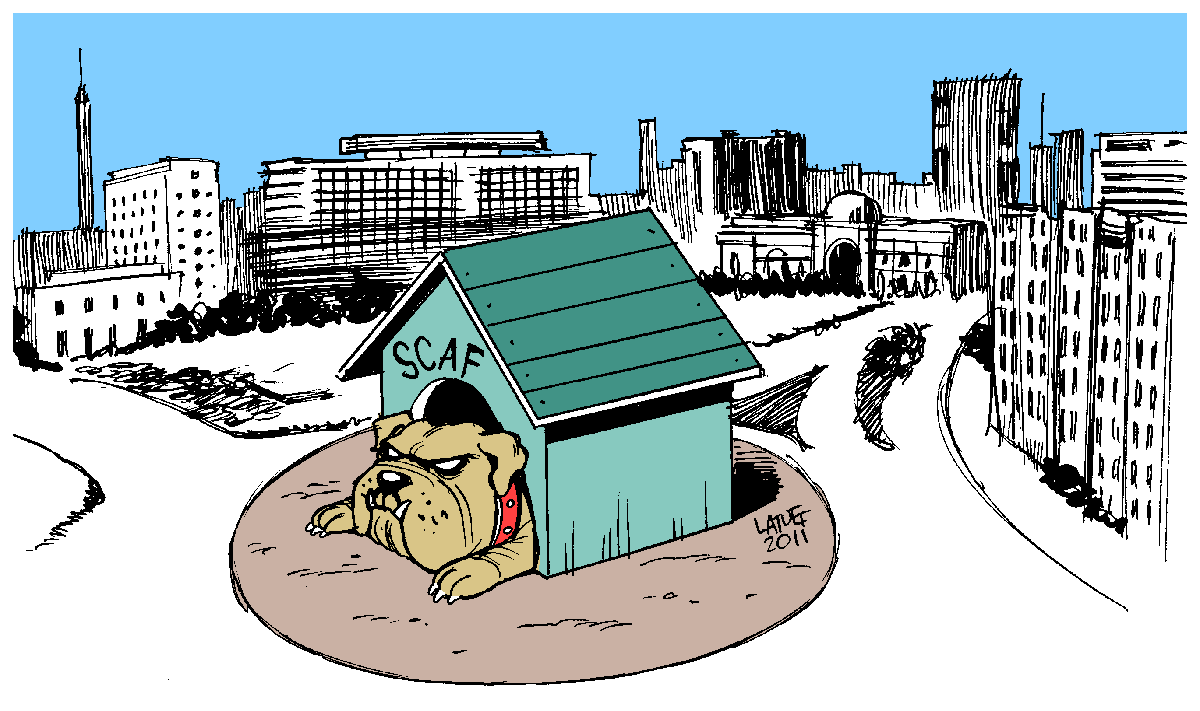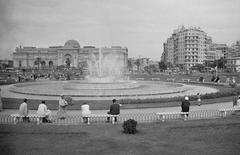
Tahrir Square Cairo: Visiting Hours, Tickets, and Historical Significance Guide
Date: 14/06/2025
Introduction
As a public space, Tahrir Square is open 24/7 and serves as the gateway to several of Cairo’s most prominent attractions, including the Egyptian Museum, the American University in Cairo, and the Qasr El-Nil Bridge. Recent urban redevelopment initiatives have enhanced its beauty and accessibility, making it more welcoming for both locals and tourists (Cestee). This guide provides essential information on visiting hours, ticketing, transportation, accessibility, safety, and practical tips for making the most of your visit to Tahrir Square.
Table of Contents
- Introduction
- History and Cultural Significance
- Visiting Tahrir Square: Hours, Tickets, and Accessibility
- Key Landmarks and Attractions
- Urban Redevelopment and Security
- Transportation and Accessibility
- Practical Visitor Tips
- Frequently Asked Questions (FAQs)
- Summary and Recommendations
- References
History and Cultural Significance
Origins and Urban Development
Tahrir Square began as Ismailia Square in the mid-19th century, intended to showcase Cairo’s modernization under Khedive Ismail Pasha. Its design drew inspiration from European urban planning, especially the boulevards of Paris, and it quickly became the centerpiece of Cairo’s expanding downtown. The surrounding buildings exhibit a blend of Art Deco and European architectural styles (Academia.edu).
Political Milestones and Revolution
The square’s name, “Tahrir” (Liberation), reflects its pivotal role in Egypt’s struggle for independence and self-identity. It became a central site for anti-colonial protests during the British occupation, notably the 1919 Revolution, and was officially renamed after the 1952 Free Officers Movement, marking Egypt’s transition to a republic. Tahrir Square cemented its place in world history during the 2011 Egyptian Revolution, when it became the stage for mass demonstrations that led to significant political change (Egypt Uncovered, New Arab).
Post-2011 Transformation
Following the 2011 revolution, the square underwent a comprehensive urban revitalization, including new landscaping, improved lighting, enhanced security, and the installation of a central obelisk symbolizing Egypt’s ancient heritage (Cestee). These efforts aim to preserve the square’s historic importance while making it safer and more accessible for visitors.
Visiting Tahrir Square: Hours, Tickets, and Accessibility
Visiting Hours
- Tahrir Square: Open 24/7 as a public space; no entrance fee.
- Egyptian Museum: Open daily from 9:00 AM to 5:00 PM. Closed on Fridays.
Tickets
- Tahrir Square: Free access.
- Egyptian Museum: Approx. 200 EGP for foreign visitors; discounts for students and children. Purchase tickets on-site or via the official website (Egypt United Tours).
Accessibility
- Metro: The Sadat Metro Station (Lines 1 & 2) is located directly beneath Tahrir Square, offering easy access from all parts of Cairo.
- Taxis & Ride-hailing: Services like Uber and Careem are widely available. Always confirm fares before beginning your trip (TravelPander).
- On Foot: The area is pedestrian-friendly, but caution is advised when crossing streets due to heavy traffic (SafeTravelGuide).
- For Mobility Challenges: Sidewalks may be uneven and crowded; the Egyptian Museum provides ramps and accessible entrances (Wanderlog).
Key Landmarks and Attractions
- Egyptian Museum: Houses over 170,000 ancient artifacts, including treasures from Tutankhamun and ancient Tanis. Guided tours are recommended (Egypt United Tours, Tribune).
- Qasr El-Nil Bridge: Famous for its bronze lion statues and panoramic Nile views (Egypt Tours Info).
- Cairo Tower: Offers sweeping views of the city and the Nile (Trek Zone).
- Talaat Harb Square: Known for its grand historic architecture.
- Cairo Opera House: Cairo’s premier performing arts venue.
- Abdeen Palace: Historic royal residence showcasing Egypt’s royal history.
- Al-Azhar Mosque: One of Cairo’s oldest and most significant Islamic landmarks.
- Downtown Cafés and Souks: Experience vibrant street life, shopping, and dining (Egypt Tours Info).
Urban Redevelopment and Security
Urban Improvements
Since 2019, the Egyptian government has invested in Tahrir Square’s revitalization, including the installation of the Ramesses II obelisk, new landscaping, restored building facades, and modern lighting systems. These upgrades enhance the square’s visual appeal, safety, and accessibility (Cestee, Egypt Tours Plus).
Security Measures
Tahrir Square is closely monitored by police and security personnel, especially during peak hours and special events. CCTV, rapid response units, and security checkpoints are present to ensure visitor safety (Xplrverse). Travelers should avoid demonstrations and remain vigilant against petty theft and scams (TravelPander).
Health and Environmental Considerations
Cairo’s air quality can fluctuate, so visitors with respiratory sensitivities should check air quality indexes and consider face masks when necessary. Drink only bottled water and be selective with street food vendors (TravelPander).
Transportation and Accessibility
- Metro: Sadat Station connects Lines 1 and 2 for easy citywide access (Egypt Adventures Travel).
- Buses & Microbuses: Extensive network, though signage may be limited and vehicles crowded (Lonely Planet).
- Taxis & Ride-Hailing: White taxis, Uber, and Careem are reliable options (Local Guide to Egypt).
- Walking & Cycling: The square and surrounding downtown are pedestrian-friendly; Cairo Bike offers shared bicycles via app (Lonely Planet).
- Nile Taxi: Provides a scenic, traffic-free alternative along the river (Lonely Planet).
- Accessibility: Some public facilities and sidewalks may lack full accessibility; plan ahead if you have mobility challenges.
Practical Visitor Tips
- Best Times to Visit: Early morning or late afternoon for cooler temperatures and softer light.
- Dress Code: Modest, lightweight clothing is recommended.
- Photography: Permitted in the square; avoid photographing police or military. A separate ticket is required for museum photography.
- Safety: Remain vigilant, especially with valuables. Avoid demonstrations and large crowds.
- Language: Arabic is the official language, but English is widely spoken in tourist areas.
- Money: Egyptian Pound (EGP); cash is preferred for small purchases, but ATMs are available.
Frequently Asked Questions (FAQs)
Q: Is there an entrance fee for Tahrir Square?
A: No, the square is a public space with free access.
Q: What are the visiting hours for the Egyptian Museum?
A: 9:00 AM – 5:00 PM daily.
Q: How can I get to Tahrir Square by public transport?
A: The Sadat Metro Station, beneath the square, connects with Lines 1 and 2.
Q: Is Tahrir Square safe for tourists?
A: Generally yes, but avoid demonstrations and keep valuables secure.
Q: Are guided tours available?
A: Yes, many operators offer tours that include Tahrir Square and nearby landmarks.
Q: Is the square accessible for wheelchair users?
A: The metro and museum have accessible entrances, but some sidewalks may be uneven.
Summary and Recommendations
When visiting, remain aware of your surroundings, respect local customs, and consider guided tours to deepen your understanding. For the latest updates on events, tickets, and travel tips, download the Audiala app.
Tahrir Square is more than a location—it is the heart of Cairo’s story, inviting every visitor to witness and participate in Egypt’s ongoing narrative.
References
- Egypt Uncovered
- New Arab
- Academia.edu
- Cestee
- Egypt Tours Plus
- Egypt United Tours
- TravelPander
- Xplrverse
- Audiala
- Egypt Adventures Travel
- Lonely Planet
- Local Guide to Egypt
- SafeTravelGuide
- Wanderlog
- Tribune
For more expert travel guides and the latest updates, download the Audiala app and follow us on social media.


































